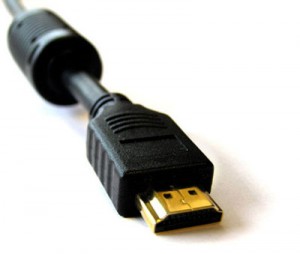How Far Can I Run An Hdmi Cable Before Quality Loss
Jun 29, 2011 HDMI cables have simplified our electronic lives, but things get tricky when those cables have to cover a long distance. And it's rare to see an HDMI cable longer than 25 feet in a store. Even online, cables more than 50 feet long can be hard to find. If your TV, set-top box and other AV equipment are all on the same piece of furniture, this isn't much of a concern. With a collocated setup, you'll. A cable that draws power from the HDMI cable may fail when components and the active components in the cable or external booster are all drawing from the same source. HDMI over Cat 5/6. Runs of up to 50 meters can be achieved by sending the HDMI signal over a run of Cat 5/6 networking cable, using special adapters designed for this purpose.
Love it or hate it, HDMI is the default standard for connecting home theater components.
HDMI - A Blessing and a Curse


A great thing about HDMI is that you can pass both audio and video from a source (such as Blu-ray Disc player) to a destination (such as a home theater receiver or TV) using a single cable.
However, HDMI does have its issues, such as occasional problems arising from its 'handshake requirements' (both the source and TV or video projector need to recognize each other in order for the connection to take). There are also several HDMI versions that determine which features can be accessed, as well as differences on what manufacturers decide to provide or not provide when implementing a specific version.
One additional problem with HDMI is that it is not always effective over long distances. It is recommended that HDMI source and destination devices be no farther than 15 feet apart for the best result, but there are HDMI cables that are available that can extend this reliably to about 30 feet. Also, if well constructed (and that doesn't necessarily mean ultra expensive), there are some HDMI cables that can extend signal integrity up to 50 feet.
However, this can be tricky as you may start seeing an effect known as the 'sparkles' and you may also encounter increased handshake problems. On the other hand, you may still encounter those issues even with short HDMI cable lengths.
So, what do you do if you want to extend that distance to beyond 50 feet or as far out as 100-to-300 feet, or even wire your entire house so that HDMI devices can be sourced and destined in multiple locations?
Wired Solution — HDMI Over Cat
One way to extend HDMI is with Ethernet cables. The same type of Ethernet Cat5, 5e, 6, and Cat7 cables used to connect devices to an internet router or home/office network can also be used to transfer the audio/video signals used in a home theater setup.
The way this is done is by using an HDMI-to-Cat5 (5e,6,7) converter kit. These kits are available from brands such as Gofanco, J-Tech, and Monoprice. This type of kit comes with a 'transmitter' and 'receiver', both of which connect to AC power.
Here are the steps to set this up.
Place the transmitter and receiver where you want them.
Connect an HDMI source (DVD/Blu-ray Disc player, cable/satellite box, media streamer, game console, or even the HDMI output from a home theater receiver if it is located a long distance from your TV or video projector) to the HDMI input on the transmitter.
Connect one end of a Cat5e, 6, 7 cable to Ethernet output of the transmitter.
Connect the other end of the Cat cable to the Ethernet input on the receiver.
Connect the HDMI output of the receiver your TV or video projector.
Plug in the transmitter and receiver to power and verify that the setup is working.
If the setup doesn't work, redo the connection setup and/or refer to our HDMI troubleshooting tips. If you are not successful, contact tech support for your converters.
In addition to extending HDMI using Cat5e, 6, or 7 cables there are similar transmitters/receiver options that transfer HDMI using Fiber or RF Coax. Fiber can extend HDMI over very long distances (think a mile or more).
The physical layout and setup are the same as with extenders that use CAT cables. The HDMI source is connected to a 'transmitter, which converts the HDMI signal to Fiber or Coax, which, in turn, is connected to a 'receiver' that converts the signal coming in over Fiber or Coax back to HDMI.
Hdmi Max Length 4k
Optical HDMI Cable
Using converters to extend HDMI over Cat, Fiber, or Coax works, but there is also the option of using HDMI cables that have Fiber Optic converters built-in to the actual HDMI connectors. These cables work just like any other HDMI cable — just plug one end into your source, the other end to your TV or video projector, and you are set to go.
These cables come in various lengths. Depending on the manufacturer, you may be able to order custom lengths. Optical HDMI cable technology supports lengths of 300 feet or more.
Optical HDMI cables are available from brands such as FIBBR, Gofanco, Monoprice, and Sewell Direct.
Wireless HDMI Solutions
Another way to connect HDMI devices together is wirelessly. This solution can definitely eliminate the need for a long HDMI cable within a large room, usually at a distance of 30-to-60 feet, but some units may provide up to 150-foot or more of coverage.
The way wireless HDMI connectivity works is that, similar to the steps used with Cat, Fiber, and Coax converters, you connect a short HDMI cable to the HDMI output of a source device (Blu-ray Player, Media Streamer, Cable/Satellite Box) to an external transmitter that sends the audio/video signal wirelessly to a receiver, that, in turn, is connected to a TV or video projector using a short HDMI cable.
There are two major competing 'wireless HDMI' formats, each supporting their own group of products: WHDI and Wireless HD (WiHD).
WHDI transmits HDMI signals using the 5 GHz frequency band. Transmission range can be up to 100 feet or more (depending on product). Examples of brands that offer Wireless HDMI products using WHDI technology include ActionTec, IOGEAR, and Nyrius.
WiHD transmits HDMI signals using 60 GHz frequency band. Transmission range tops out at about 60 feet but decreasing or becomes non-effective when transmitting through walls. Results are best if the transmitter and receiver within line-of-sight. Some brands that offer Wireless HDMI products using WiHD technology include DVDO,Gefen, and Monoprice.
Both of these options are intended to make it more convenient to connect HDMI sources and TVs or video projectors without an unsightly cable.
However, just as with traditional wired HDMI connectivity, there can be 'quirks' such as distance, line-of-site issues, and interference of located near a wireless router or similar device (depending on whether you are using WHDI or WiHD).
There are also differences on how both methods may be implemented on a brand and model level, such as whether some surround sound formats and 3D can be accommodated, and many 'wireless HDMI' transmitters/receivers are not 4K compatible but are available on growing number of units. If you need 4K compatibility, definitely check product features and specs to make sure it is provided.
The Bottom Line
Like it or not, HDMI is the main connection used in home theater, and it is not going away anytime soon.
On the positive side of things, HDMI provides the ability to transfer HD (and now 4K) video, as well as required audio formats from source components to home theater receivers and video displays. Even the PC world has come on board with HDMI connectivity now a standard feature on both desktops and laptops.
However, despite its widespread adoption, HDMI isn't trouble free and one of its weaknesses is its inability to transfer video signals over long distances without additional support.
Wired-based options are the most stable when using HDMI in combination with Ethernet, Fiber, Coax, or using Optical HDMI cables, but wireless alternatives are also viable for home use.
If you are setting up a home theater system where there is a long distance between your HDMI connected components, and you find that they just aren't working, definitely consider the options discussed above as possible solutions.
Costs to implement each solution can vary widely, so take stock of what your specific needs are and which option will meet those needs with within your budget.
